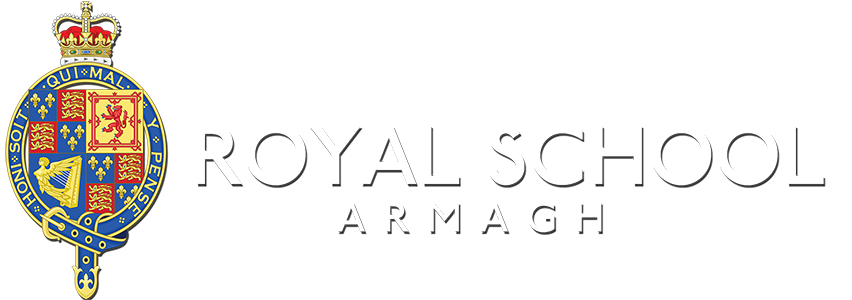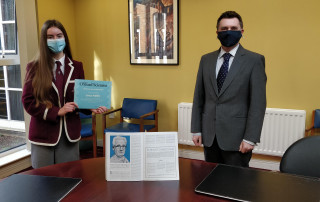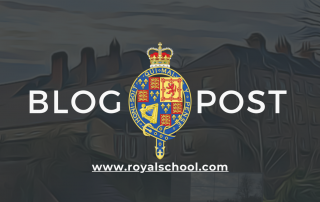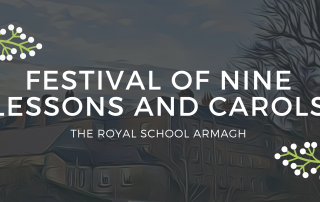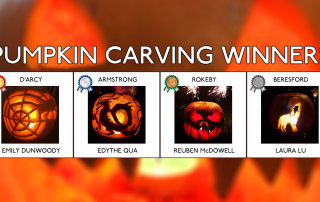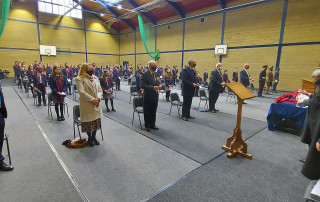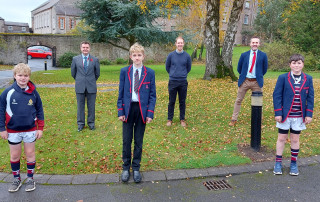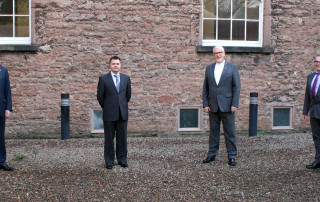Subject Information
“Creativity is just connecting things. When you ask creative people how they did something, they feel a little guilty because they didn’t really do it, they just saw something. It seemed obvious to them after a while. That’s because they were able to connect experiences they’ve had and synthesize new things. And the reason they were able to do that was that they’ve had more experiences or they have thought more about their experiences than other people. Unfortunately, that’s too rare a commodity. A lot of people in our industry haven’t had very diverse experiences. So they don’t have lots of dots to connect, and they end up with very linear solution without a broad perspective on the problem. The broader one’s understanding of the human experience, the better design we will have.”
Steve Jobs
In the Art & Design department we deliver courses that meet the requirements of the NI Curriculum. Within that we ensure that students experience working in a wide range of different areas whilst exploring varied media and working in three dimensions. It is also important that students are given opportunities to create digital art using new technologies.
We aim to create an ethos within the department that focuses on instilling a life long interest and respect for Art. Endorsing the relevance of the visual arts in the wider community helps to demonstrate a real world context of Art. Learning about the work of artists, craftspeople and designers is paramount to nurturing an appreciation of the visual arts, and we guide students through analysing the work of others critically. This helps students to gain a deeper understanding of their own work.
The department is hard –working and has had many students at both GCSE & A level gain top marks. We are also very fortunate to have had students’ work regularly showcased in the CCEA best of GCSE & A level at the annual True Colours Exhibition in the Ulster Museum. Students across all year groups have also been successful in art competitions, but notably the Credit Union Ireland and the Texaco Art competition where some students were regional and national winners.
Apart from developing and improving a vast range of practical skills in Art, students are given opportunities to improve their ability to think critically about Art. We promote independent thinking and encourage students to make their own judgements. Inter- transferable skills such as problem solving, critical thinking, working together as a team and being creative are aligned closely with the work that we do in the department throughout KS3, GCSE and A level.
Key Stage 3
Drawing is still the best way to communicate ideas quickly – that’s why all the engineers here carry a sketchbook. James Dyson, British inventor, and designer.
The Art & Design department at Royal School Armagh has a strong emphasis on drawing. We believe and practice that drawing is at the heart of everything we do. We want all students to enjoy studying art regardless of their innate ability, it is our job as teachers to help enhance and improve their basic art skills. We focus on working from life, exploring style, expression and the ability for students to personally engage with their work.
We live in an ever-changing modern world so we place a strong emphasis on the importance of ‘creative thinking’. We educate our students on the importance of realising the potential of their ability to express themselves and to value their inter-transferable problem solving skills developed in the department, which can then be utilised in the wider society and students’ future careers. Students complete a range of projects that include; print, painting, sculpture, ceramics/3D design, corporate identity design, digital art, and land art to name but a few.
We believe in encouraging students to carry out first-hand research and so students will be exposed to live artworks and taken on-site visits and gallery visits where relevant and possible. We do of course make the most of the wonderful examples of Georgian architecture on our doorstep! We strive to provide a classroom experience that will be lifelong and lead to a desire for further study and development in this subject.
GCSE
The department follows the CCEA specification for GCSE. The GCSE is a two-year course where students complete;
Component 1:
Part A: Exploratory Portfolio
Part B: Understanding the Creative and Cultural Industries
Component 2: Externally Set Assignment.
This specification is a linear qualification: students take all the assessments at the end of the course. Students work across an extensive range of different disciplines, where they are encouraged to work towards their strengths and create highly personal and unique pieces of Fine Art and Design. Students complete a variety of creative workshops, developing skills in different areas across the Art & Design spectrum.
More detail can be found by clicking on this link:
AS & A level
We follow the CCEA specification in Art & Design, which develops in-depth knowledge and understanding of art, and design through research and practical activities, intellectual capabilities, and independent approaches to learning.
The specification has four units:
Unit AS 1: Experimental Portfolio
Unit AS 2: Personal Response
Unit A2 1: Personal and Critical Investigation
Unit A2 2: Thematic Outcome.
More information on studying A level in Art & Design can be found by clicking on the link below:
At A level a strong emphasis is placed on understanding art and its wider contexts, students are therefore regularly taken to exhibitions and they also complete a range of workshops to enhance their learning and understanding of art.
We have an excellent track record of achieving top results. We believe that forging good relationships with our students helps to foster the hard-working atmosphere that is required to help achieve these results. There are a high proportion of our students that go on to study arts-based degrees across the UK and Ireland and we welcome visits from past students to inspire our establishing young art students. Numerous past students have gone on to study at world-renowned universities including the Royal College of Art, Central St Martins, Falmouth University, Goldsmiths and the University of Bath and Queen’s University for Architecture, and the Dyson Institute of Engineering and Technology.
Naturally studying Art & Design opens numerous opportunities within the creative industries such as; film, animation, gaming design, graphic and fashion design. Set design, photography, illustration and interior design are also attractive options for students, as well as working in advertising, architecture and engineering. James Dyson is famous for his ability to create unique, world- wide recognised designs. Before venturing into industrial design and engineering, he studied at The Royal College of Art. Click on the link below to find out more about how useful Art was in his ability to become one of the world’s most innovative designers.
Moving beyond the creative industries it is widely recognised that studying Art & Design develops students’ ability to analyse and think critically, whilst problem solving, managing information, working as part of a team as well as thinking creatively and refining their fine motor skills. This means that studying Art at GCSE or A Level can be useful to students who wish to study dentistry or medicine.
More information on careers using Art can be found by clicking on the links below.
The number of famous people who studied Art are too many to list but here are a few; Andy Warhol, Damien Hirst, Tracey Emin, Pablo Picasso, Leonardo da Vinci, James Dyson, Peter Capaldli, Alan Rickman, David Bowe, The Duke and Duchess of Cambridge.
